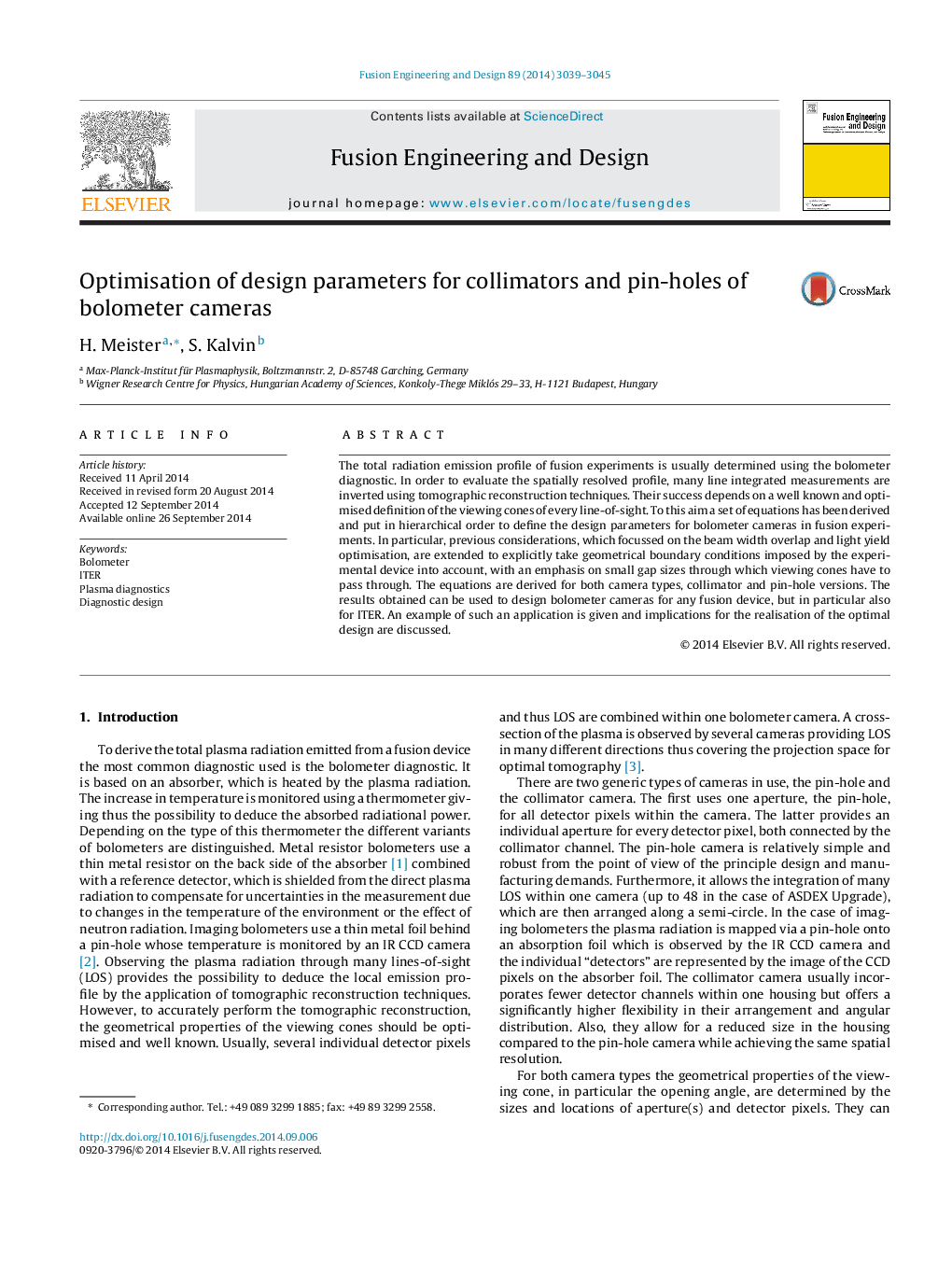| Article ID | Journal | Published Year | Pages | File Type |
|---|---|---|---|---|
| 271104 | Fusion Engineering and Design | 2014 | 7 Pages |
The total radiation emission profile of fusion experiments is usually determined using the bolometer diagnostic. In order to evaluate the spatially resolved profile, many line integrated measurements are inverted using tomographic reconstruction techniques. Their success depends on a well known and optimised definition of the viewing cones of every line-of-sight. To this aim a set of equations has been derived and put in hierarchical order to define the design parameters for bolometer cameras in fusion experiments. In particular, previous considerations, which focussed on the beam width overlap and light yield optimisation, are extended to explicitly take geometrical boundary conditions imposed by the experimental device into account, with an emphasis on small gap sizes through which viewing cones have to pass through. The equations are derived for both camera types, collimator and pin-hole versions. The results obtained can be used to design bolometer cameras for any fusion device, but in particular also for ITER. An example of such an application is given and implications for the realisation of the optimal design are discussed.
